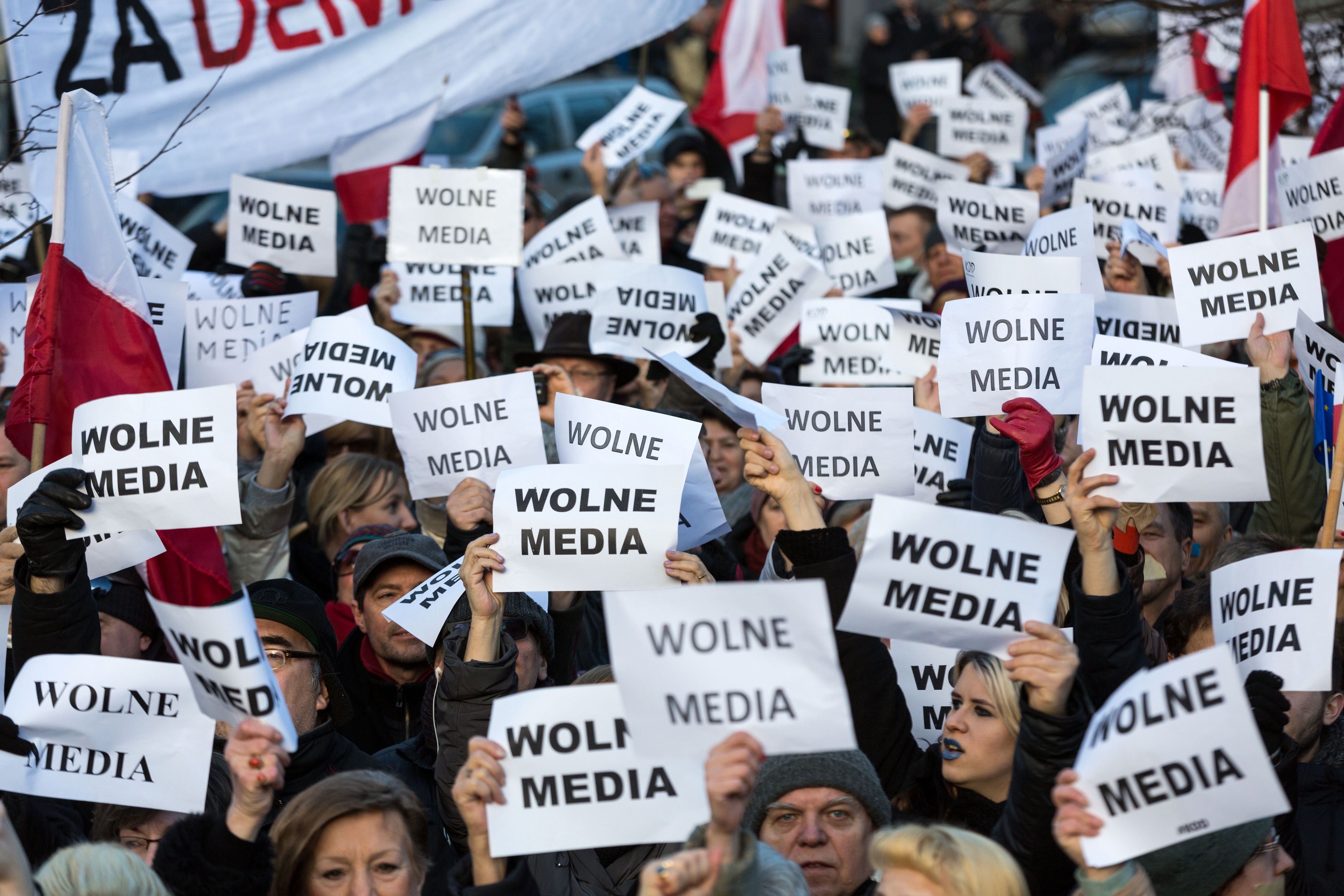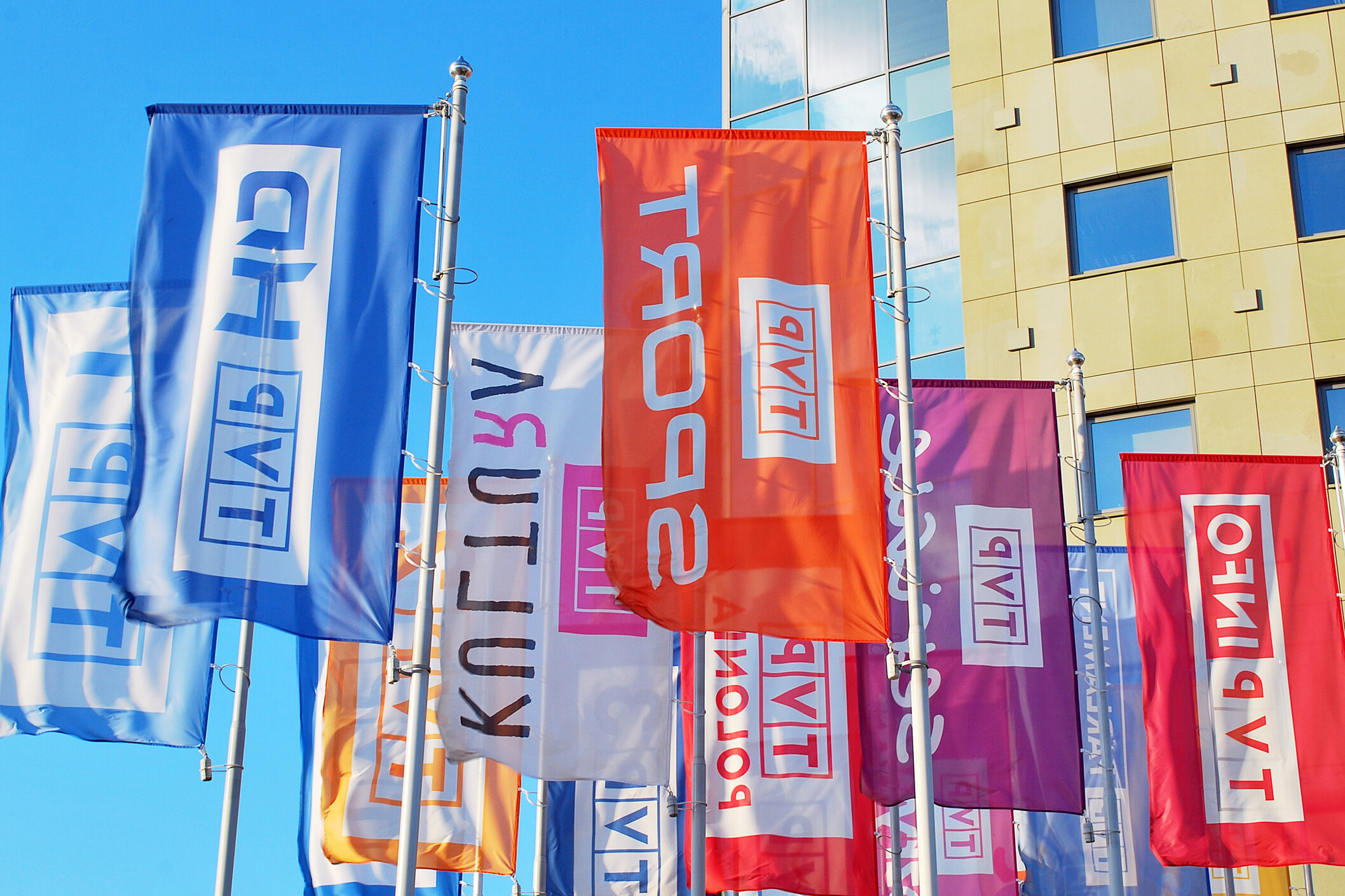Polish election: The impact of unbalanced coverage
3rd October 2023
Public service media come under particular scrutiny during times of election. With Poland soon heading to the polls, we take a look at the state of public media.

Focusing on the case of Poland, where citizens are soon to present themselves to the polls, we dived in to the relationships between the government, regulatory authorities, and the media themselves. For this, we recently met with Oliver Money-Kyrle, Head of European Advocacy and Programmes at the International Press Institute (IPI), to talk about issues surrounding unbalanced coverage of elections by public service media (PSM).
Initially, the prime duty of independent PSM is to its audience, the public. They have a mission to provide people with critical, factual and comprehensive news and information. This mission becomes particularly important during election periods, so that the public have a source of trusted news and information through which they can make informed decisions. Giving a pluralistic account of the different parties, their candidates and their political programmes is essential to foster political participation among the public. But this coverage also needs to be transparent, fair and impartial so not to offer an unfair advantage or show particular allegiance to one party or another.
Covering elections
By reporting on the elections and enabling the visibility of the various candidates, a plural media landscape offers political opponents a playing field to demonstrate their respective programmes and raise public support.
However, the rules surrounding the coverage of elections varies from country to country. And public service media, in particular, are bound by rules to ensure balanced coverage. In some, such as France for example, the political campaigns on public media are highly regulated by laws set by a national media regulatory authority. In Sweden, the broadcasting of the election campaigns are broadly left to the editorial judgment of individual media houses. And then there are countries that function with a combination of both.
Public broadcasters can approach the reporting of elections in different ways. Either through equal access, giving the same visibility to every party and/or candidate, which ensures plurality but has a risk of distracting from attention from debates or that might be of particular public interest. Or by proportionally allocating parties or candidates a certain amount of according to certain objective criteria, such as the results of previous elections. While main issues and parties are exposed, it often leaves very little space for new or smaller parties who don’t have a voice as strong as their traditional opponents.
When election reporting in unbalanced
This raises the question of unbalanced coverage. The issue with media favouring one or a few political parties in particular by giving them significantly more exposure than others, is that it goes against the very principle of a fair and pluralist reporting of the political landscape to the public, which is a core principle of public service media. If the light is beamed only on a few – or only one – political party, then the chances for effective democratic elections arguably weakens, as the public might not be as informed about or exposed to other possibilities. The risks grows if such practices are used by public service media who are usually trusted institutions.
Subscribe toour newsletter
Keep updated with the latest public
media news from around the world
The Case of Poland
On the 15th of October, parliamentary elections will take place in Poland. The two previous elections were won by the conservative Law and Justice Party (PiS), who upon their 2015 victory, passed new laws enabling the government to have a stronger grip over public media in the country.
The public broadcasters, TVP – known to be partisan to PiS especially since the amendments in the Broadcasting Acts in 2015 – as well as Polskie Radio, have recently been in the sights of members of the Media Freedom Rapid Response group (MFRR), whose latest press freedom mission to Warsaw unveiled the precariousness of independent media ahead of October’s elections.
Despite the fact Poland has one of the largest media markets in Central and Eastern Europe, the freedom of public and independent media organisations is not guaranteed. Speaking to PMA, Mr. Money-Kyrle highlighted how various intimidation processes, as well as stratagems from the government, are used to weaken broadcasters and media organisations who do not follow the words of the ruling party, notably through abusive lawsuits (SLAPPs) and heavy fines issued by the Polish National Broadcasting Council (KRRiT).
“Independent media and private broadcasters are facing quite some challenges from the government and the KKRiT, tricks as late licence fee approvals and change of rules on radio frequencies who leave them in uncertainty. […] By this, they maintain a form of control, or at least a pressure on other media, especially independent ones.” Oliver Money-Kyrle (IPI)
Public and National Media
Mr. Money-Kyrle explained how the public broadcaster TVP unapologetically recognises that it does not fulfil the role of PSM but rather justifies their approach as a national broadcaster who is “countering the balance of left-wing liberal media that dominated the Polish landscape, as to provide a network of authentic conservatism”.
Unsurprisingly, when it comes to the reporting of the upcoming parliamentary elections, the coverage reflects this view. The majority of the political coverage is focused on the governing coalition, with 73% devoted to the ruling PiS party, while the opposition have to break the tie of the 20% remaining.
“The real concern is about what will come after the elections, if PiS is re-elected. The biggest concern is the flight of foreign investments (in the media).” – Oliver Money-Kyrle (IPI)
While we cannot fully evidence that high support for the ruling party is partly a result of unbalanced coverage of the political parties, Poland’s position of 57/180 countries in RSF’s 2023 World Press Freedom Index is partly due to the government’s “attempts to change the editorial line of private media and control information on sensitive subjects.”
According to a recent report of the European University Institute, Monitoring media pluralism in the digital era, Poland is one of the countries considered as being at a high risk when it comes to political interference in media organisations, notably because of the politicisation of resource distribution. This is something corroborated by Money-Kyrle following his return from MFRR’s mission to Warsaw. Indeed, he pointed out the prominent place of the TVP on the Polish media market, which represents almost a third of it, and is available almost universally, especially in very remote areas where access to information is still a problem. Additionally, the outstanding annual budget of 2.5 billion Zlotys (approximately €550 million) they are granted by the government ensures their stability. Stability also secured by the KRRiT, whose board members who are reported to be predominantly in favour of the government.
An uncertain future
An important point made by Money-Kyrle is how complicated it is to measure the impact of such imbalanced political coverage. The worrying “Polishisation” and capture of the media landscape in Poland with the recent purchase of Polska Press by the state-controlled oil company PKN Orlen, is not only concerning for the elections, but especially for what comes after. While democracies flourish with the presence of a viable independent public media sector, they must also be a part of a successful plural media market. Money-Kyrle stressed how concerning it would be for the private broadcasting sector should PiS be re-elected, as long term investments from foreign media owners would also be at risk.
But in this rather grim painting of the media’s reporting on elections in Poland, there is a ray of light: other privately owned media that retain a strong source of private, independent investment, can offer a counterbalance to the propaganda of the national broadcasters. Furthermore, despite their wide reach and being labelled as public media, TVP and Polskie Radio seem to not enjoy a high level of trust from the public, unlike what is seen with independent public media elsewhere in Europe.
By Charlotte Pion
Related Posts
27th June 2023
“More than a tool”: RTVE uses AI tech to cover local elections
RTVE is revolutionising its approach to…
20th December 2022
Poland: Proposed law set to boost prominence of controversial public broadcaster
An amendment to the Broadcasting Act’s…



